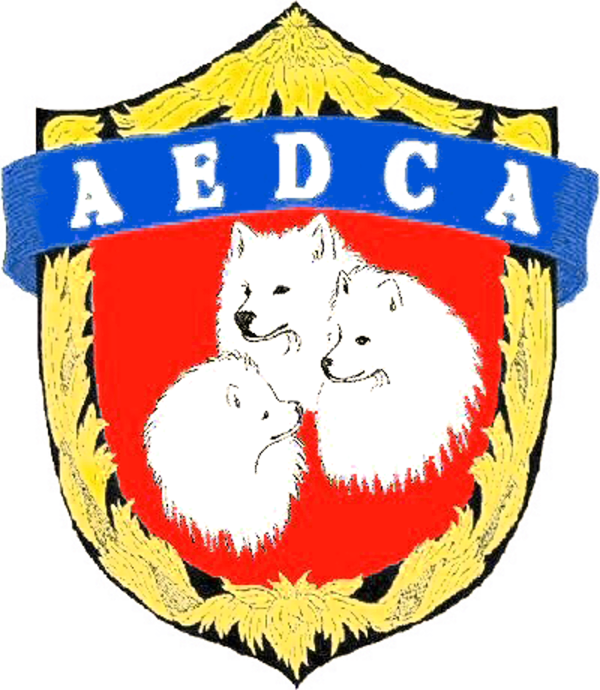 |
 |
 |
 | ||





|
History of the American Eskimo Dog
by Diana Allen
(adapted from 2012-June ShowSight Magazine) Pages 262,264-265
The American Eskimo Dog's country of origin is Germany. It was originally bred as a multipurpose working dog on the farm. The "Eskie", as it has been nicknamed, is one of a number of Spitz breeds. The word "Spitz" is a German word and translated as "sharp point". The dogs were referred to as Spitz as when alerted their ears would quickly come to a sharp point. Spitz breeds are also called "Nordic Breeds; the two terms are interchangeable.
On the whole, Spitz breeds have the same characteristics. They have erect ears, wedge-shaped heads, double weather resistant coats, are trotting breeds, have tails that are well plumed and they all have been used to assist man. They have been used as herders, hunters, haulers, guardians and devoted companions. These are just a few of the many services that they are capable of performing.
On the Farm
The Spitz in Germany was used to assist humans in numerous tasks on the farm. Farms in Germany are different from what we are used to seeing in the US. In Germany, farmers lived in villages and went out each day to the farm. Sheep and cows lived in the village at night and had to be taken out to pasture each day. The dog was an intricate part of the farmer's life. The dog would not only keep away predators of animal and human out of its territory the dog needed to know the difference between its own livestock and trespassing livestock. The Spitz was an intelligent, thinking dog. It was robust and hardy, with a strong natural desire to please. The Spitz will do its best to accomplish any task asked of it.
Coming to the United States
When the German settlers came to the US, many of their dogs came with them, so came the Spitz. The Spitz are also found in black, chocolate and red, but why the white variety was the most popular color in the US is unclear. Many of the German settlers settled in the Midwest and New England as these areas look much like the German countryside. German settlers also went to southern Texas and the Spitz became popular in that region. The Germans used the Spitz in the same manner as they did in Germany.
Circus Life
The Spitz's historical association with the circus began in Germany; however, the German circuses used the Spitz, but no more or less than any other breed or mixed breed.
Gypsies were noted to have Spitz traveling with them. The dogs would readily warn of an approaching stranger, this also included the local law enforcement. Since the breed was easily trained, eye catching and intelligent, the gypsies would train the dogs to do tricks. They would then invite the local townspeople to come and watch the dogs, for a fee of course. Some of the circuses in Europe began to use the Spitz in their acts.
In the 1920s, there was a story of the P.T. Barnum and Bailey circus using a Spitz in one of its circus acts named "Bido". (In fact, "Bido", a dog from the Midwest, can be found in old pedigrees of that time.) It was said it was the only dog to be trained to walk a tightrope; however, there is no documentation of the actual dog performing.
The circuses used many dogs in their acts. The American Eskimo Dog was undeniable used in circus acts, but was never developed or bred to be a circus dog.
The Spitz Name
The UKC (United Kennel Club) registered the breed in 1913. Only the white variety was registered. There was a fire in the early days of UKC and many of the records were lost; therefore, the first recorded registration of the breed isn't until 1922. There were seven dogs registered under the breed name of "Spitz": the first recorded bitch was "Patsy Pall" and the first male was "Rob Roy". In 1923, an additional thirteen were registered as Spitz.
By 1924, there was considerable anti-German sentiment in the United States arising. Many of the German breeds were being chastised and discriminated against. UKC changed the name of the breed to "American Spitz," In 1925, the breed name was changed again to "American Eskimo Spitz". This name was adopted from the kennel name of Mr. & Mrs. Hall who raised the Spitz along with a number of other breeds. Their kennel name was "American Eskimo Kennels". In 1926, the "Spitz" was completely taken off the name; however, the breed was still referred to for many years as "Spitz" or "Eskimo Spitz".
The Standard
In 1995, the AKC officially accepted the American Eskimo Dog for registration. They did not separate the breed into separate varieties or sizes. Eskies are shown in the AKC Non-Sporting group and UKC Nordic group.
The Eskie Temperament
The American Eskimo is considered a "primitive breed", in that many of the natural instincts of the breed are still fixed. The Eskie, as with most Nordic breeds, has a strong pack instinct. The Eskie's natural instincts in breeding, whelping and rearing of a litter are unyielding and require little to no outside assistance The breed is noted for its longevity, with many living until their middle to late teens. For their size, they are strong, powerful dogs. Also, they are a healthy breed when compared to many other breeds, but are not without their issues.
As with any breed, they are not the breed for everyone. With their strong pack instincts, they must have a pack leader. They are a moderately active breed and do need exercise. They are a double-coated breed with a thick weather resistant coat, and will shed their undercoat usually twice per year. They are a resourceful, thinking breed and can be destructive if left without a "job" or something to do.
They are easy to train, love to work and enjoy being with their human pack members. Off lead, they prefer to stay within sight of their human. They have a close bond with humans in general, and enjoy working close with them.
They are a versatile breed being able to be used for many tasks. Breeders work hard to breed a dog that is sound structured, mentally stable and can do the work the breed was intended to do, which is to be versatile, able to herd, able to be a watchdog as well as a close companion, be intelligent, easy to train, independent and be not needy. These are the traits that are the essence of what makes the breed an American Eskimo Dog.
The American Eskimo Dog traces its ancestry to Germany and has many of the same ancestors as many the Nordic breeds of today. Today, the American Eskimo Dog stands proud of its German heritage. The American Eskimo Dog is one of the most versatile breeds excelling in herding, agility, tracking, obedience, service and therapy work, companion, and just an all-around great dog!
Donate to AEDCA
via Zelle®
or via Paypal®
| Save the dates: |
| 2024 National Events |
| March 1-4, 2024 |
| Phoenix, Arizona |
| 2024 National Events Site ← |